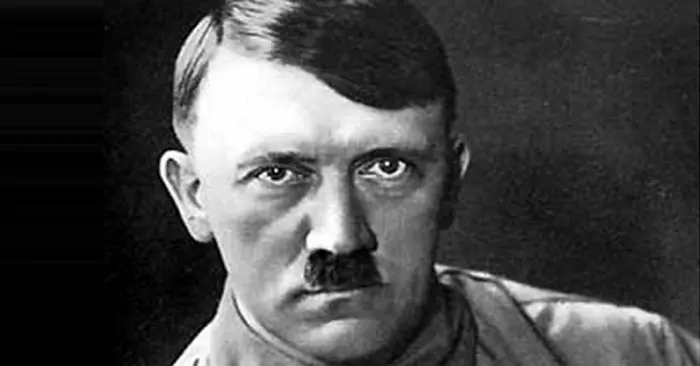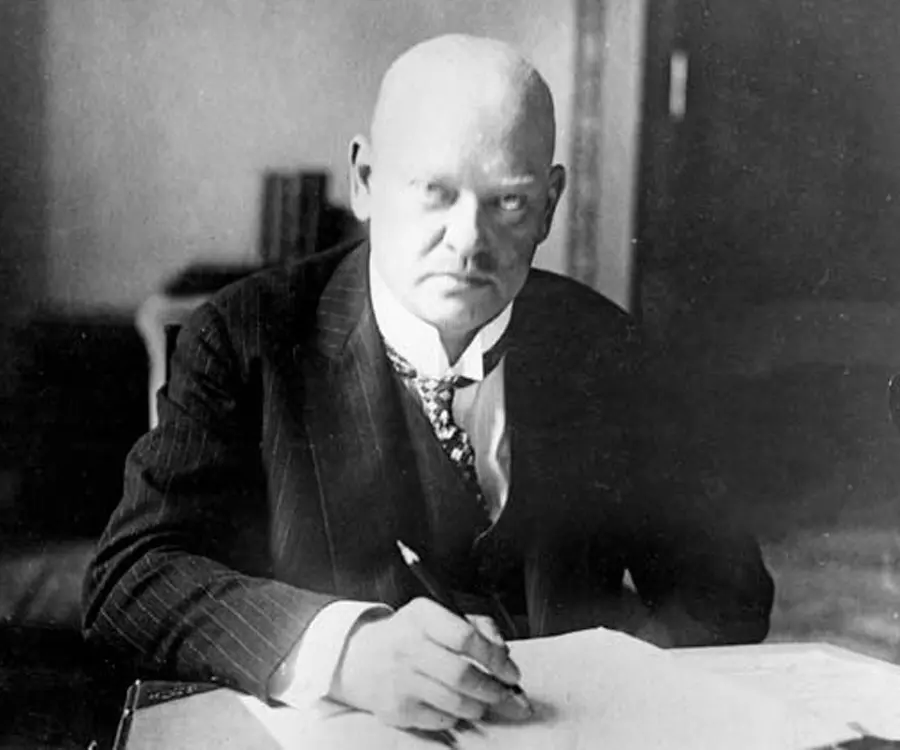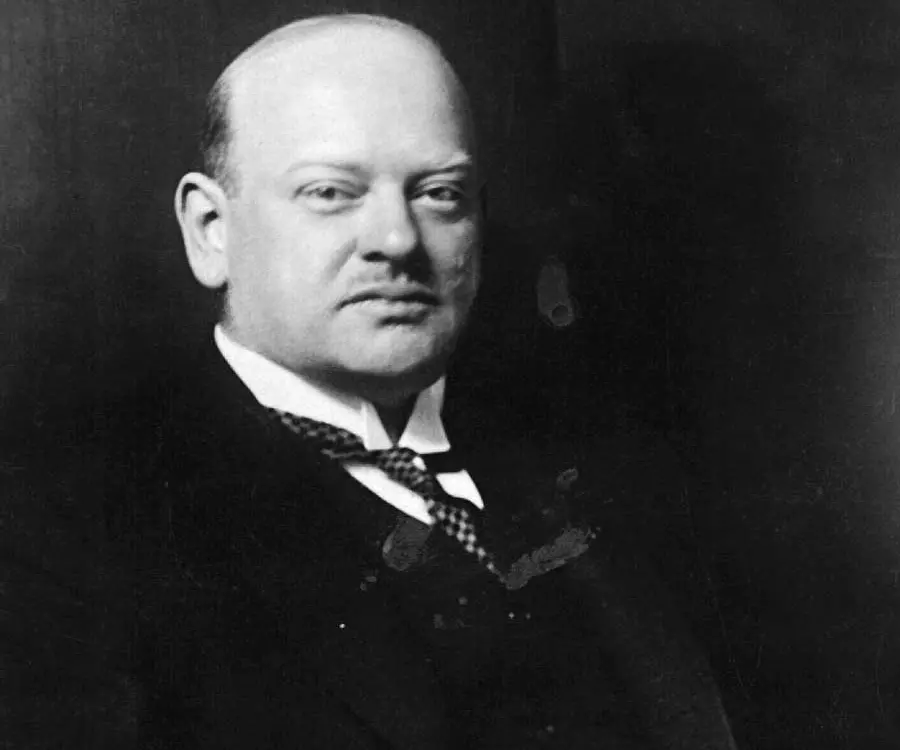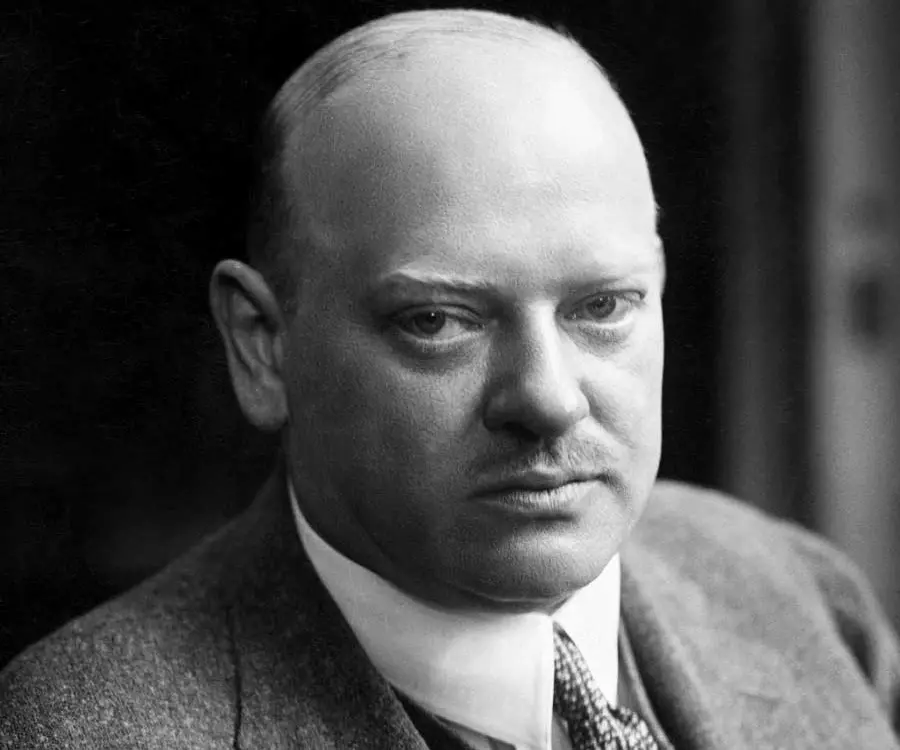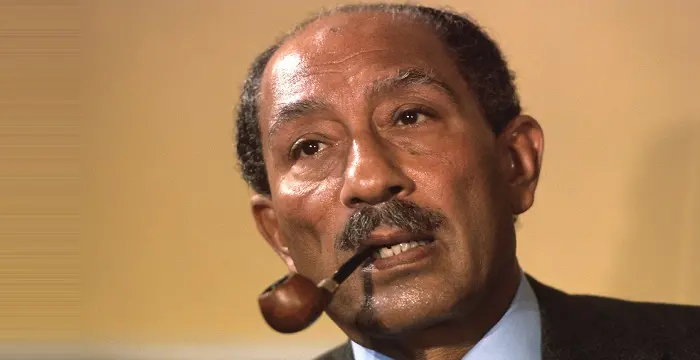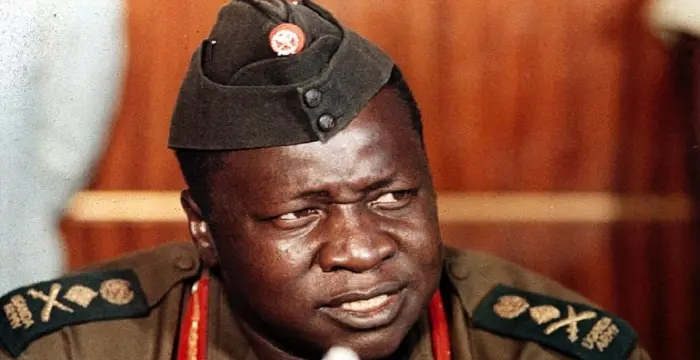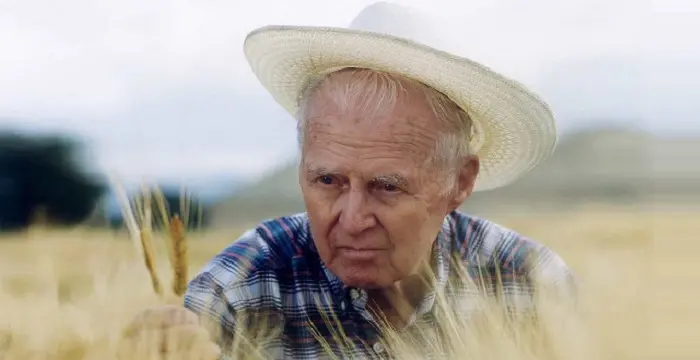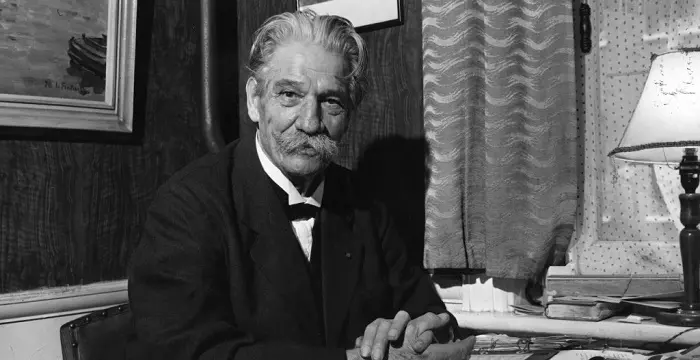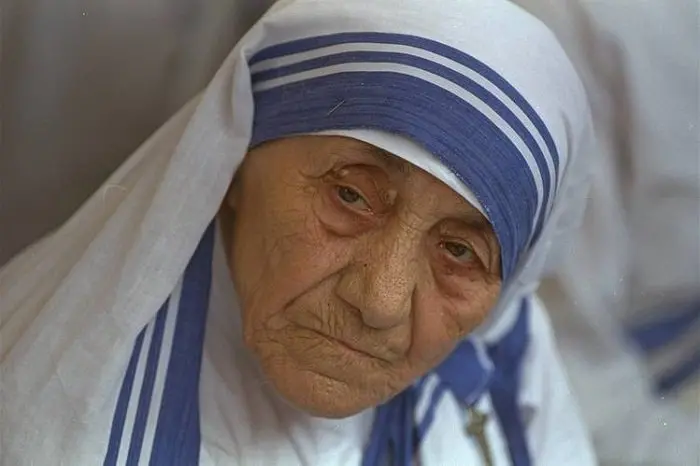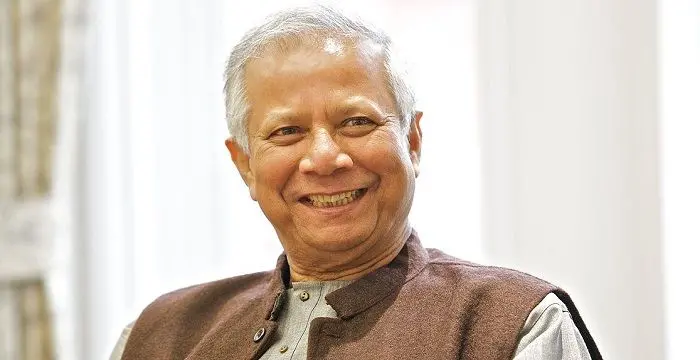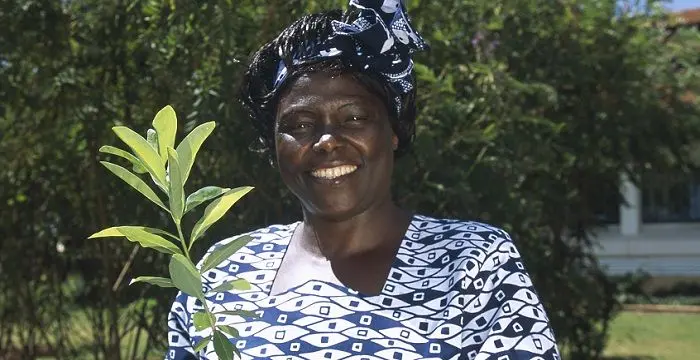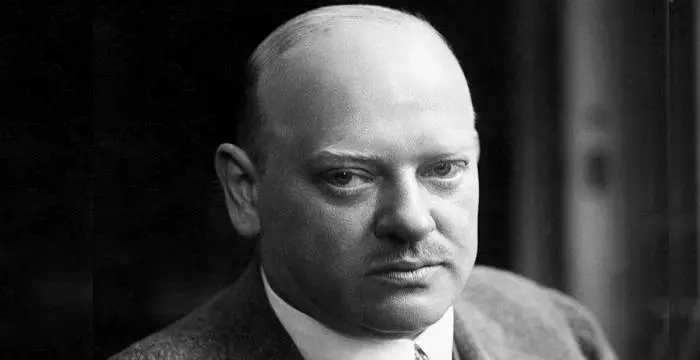
Gustav Stresemann - Chancellor of Germany, Timeline and Personal Life
Gustav Stresemann's Personal Details
Gustav Stresemann was a German politician and statesman who served as Chancellor and Foreign Minister during the Weimar Republic
| Information | Detail |
|---|---|
| Birthday | May 10, 1878 |
| Died on | October 3, 1929 |
| Nationality | German |
| Famous | Nobel Peace Prize, Leaders, Political Leaders, Presidents, Chancellor of Germany |
| Spouses | Käte Kleefeld |
| Childrens | Hans-Joachim, Wolfgang |
| Birth Place | Berlin |
| Gender | Male |
| Father | Ernst Stresemann |
| Sun Sign | Taurus |
| Born in | Berlin |
| Famous as | Chancellor of Germany |
| Died at Age | 51 |
// Famous Chancellor of Germany
Adolf Hitler
Adolf Hitler was the infamous dictator of Germany who carried out the genocide of Jews and was majorly responsible for the World War II. Know more about his life in this biography.
Angela Merkel
Angela Merkel is a German politician who has been the Chancellor of Germany since 2005. This biography of Angela Merkel provides detailed information about her childhood, life, achievements, works & timeline
Gustav Stresemann's photo
Who is Gustav Stresemann?
Gustav Stresemann was a German politician who served as Chancellor of Weimar and later served as Foreign Minister of the Weimer Republic till his death. As a strong nationalist he played a prominent role in bringing out Weimar Germany from its bleak period of hyperinflation to the more promising ‘Golden Years of Weimer’. He was a Reichstag deputy who was elected ‘National Liberal Party’s’ leader and few years later he founded the ‘German People’s Party’ along with majority of National Liberal Party’s centre and right wings and became its chairman. His vision of making Germany progress economically and regain its position back in the European community after the World War I led him to abide by the ‘Versailles Treaty’. His move became successful winning allies from Western Europe. His most remarkable achievement was his policy of negotiation and reconciliation with France that also witnessed sponsorship of France in aiding entry of Germany in the ‘League of Nations’. He shared the ‘Nobel Peace Prize’ with the French Foreign Minister Aristide Briand in 1926, for their efforts in improving relations between Germany and France especially after the World War I.
// Famous Leaders
Edi Rama
Edi Rama is the current Prime Minister of Albania. Check out this biography to know about his childhood, life, achievements, works & timeline.
Tecumseh
Tecumseh was a Native American leader of the Shawnee clan. This biography profiles his childhood, life and timeline.
Khalifa bin Zayed Al Nahyan
Sheikh Khalifa bin Zayed Al Nahyan is the current President of the United Arab Emirates (UAE). Check out this biography to know about his birthday, childhood, family life, achievements and fun facts about him.
Childhood & Early Life
He was born on May 10, 1878, in Berlin, Germany, into a lower middle class family. His father Ernst Stresemann was a beer distributor, a small bar owner and also rented rooms for extra income.
He was an excellent student and received good quality education attending high school and university. He excelled in German literature and poetry and showed inclination in modern history. He was inspired by the likes of Johann Wolfgang von Goethe and Napoleon.
In 1897, he enrolled in the ‘University of Berlin’ and studied political economy which gave him exposure in nationalistic and liberal ideas including the principles and ideologies of socialism.
He actively participated in the German student’s movement, the ‘Burschenschaften’, during his university days. In April 1898, he became the editor of the newspaper ‘Allgemeine Deutsche Universitäts-Zeitung’ where his editorials often criticized other contemporary political parties. He used to pen down his composite views on liberalism and nationalism.
In 1898, he took transfer from the ‘University of Berlin’ to the ‘University of Leipzig’ in order to pursue doctorate. In January 1901, he submitted his thesis, which was based on Berlin’s bottled beer industry.
Career
His career started in a trade association and his swift progress in commerce initiated his first step into politics. From 1901 to 1904 he served the ‘German Chocolate Makers’ Association’ as its administrative assistant establishing himself as an effective and diligent coordinator and negotiator.
In 1902, he established the ‘Saxon Manufacturers’ Association’ and represented the association legally till 1911.
In 1903, he joined the ‘National Liberal Party’ and represented the party effectively in Saxony.
Stresemann was elected in 1906 as the Dresden city councillor and served in the position till 1912, mastering skills on municipal affairs. During that period he also remained editor of ‘Sächsische Industrie’, a Dresden magazine, and gained acclaim for his writings on economics. Eventually he led the ‘National Liberal Party’ in Saxony.
In 1907, he set foot in national politics after being elected to the Reichstag that is the parliament, representing the Annaberg district. Stresemann became the youngest deputy in the parliament.
He became close to the chairman of the party, Ernst Bassermann who aided him to progress in his political career. However, in 1912 he had to give up his position as an executive committee member of the party following conflict with the more conservative wing of the party for supporting extended social-welfare legislations.
In 1912, he lost in the elections of Reichstag as well as in the town council following which he made a trip to the US along with few business leaders to study the economic conditions there. Later he founded the ‘German-American Economic Association’.
In December 1914, he was again elected to the Reichstag through a special election. This time he became the de facto leader of the faction of National Liberal members in the Reichstag because of Bassermann’s absence there, either due to poor health or for military service.
As the World War I broke out in Europe, Stresemann like most Germans viewed that the nation was simply carrying out a defensive war. He slowly shifted from the left to the right wing of the party and defended the monarchy and expansionist objectives of the nation.
He worked in close association with General Erich Ludendorff and Field Marshal Paul von Hindenburg from 1916 and often voiced their opinion in the parliament. He opposed Chancellor Hollweg’s policy and supported unlimited submarine warfare.
In 1917, he became the leader of the ‘National Liberal Party’ following the death of Bassermann.
In 1918, after the war that witnessed the defeat and subsequent crumbling of the monarchy on November 9, he gradually moulded himself as a more realistic republican. He became a member of the ‘German Democratic Party’ which was led by the likes of Naumann and Max Weber but was dismissed by the party due to his link with the right wing.
He later founded the ‘German People’s Party’ in 1918 along with majority of National Liberal Party’s centre and right wings and became its chairman. The party advocated lower tariffs and secular education.
After being elected in the Reichstag in 1920 he remained in the opposition for the next three years.
In 1922, Germany signed the ‘Treaty of Rapallo’ with Russia.
Later he joined hands with the left and centre parties although he and his party initially opposed the ‘Weimar Republic’ - which was formed in 1919 to replace monarchy and establish democracy in Germany.
A coalition government was formed that included the members from the Centre, the Social Democrats, the German Democrats and also his party. He was appointed as Chancellor and Foreign Minister on August 13, 1923. While he remained the Chancellor till November 23, he held the post of Foreign Minister till his death.
In his short tenure as the Chancellor he put to an end to resistance of the Germans against the Belgian and French ‘Occupation of the Ruhr’ and made efforts to stabilize German currency. He strongly handled insurgency in Saxony and re-established system in Bavaria following failure of Adolf Hitler’s ‘Beer Hall Putsch’.
He remained the unchallenged Foreign Minister till his death in different coalition governments of varying compositions starting from centre to left. One of his notable accomplishments as Finance Minister was signing of the ‘Dawes Plan’ in 1924 that led to reduced reparation payments and financial stability for Germany.
In April 1926 the ‘Treaty of Berlin’ was signed. His vision of making Germany progress economically and regain its position back in the European community after the World War I led him to comply with the ‘Versailles Treaty’. His move became successful winning him allies from Western Europe especially France.
The ‘Kellogg-Briand Pact’ was signed by Germany in August 1928. The signatories of the pact agreed not to adopt war to resolve conflicts and disputes. This move taken by Germany changed perspective of people about Weimer Germany which led to the ‘Young Plan’ of February 1929, the negotiations of which were conducted by Stresemann.
Major Works
The most remarkable achievement of Stresemann as Foreign Minister was his policy of negotiation and reconciliation with France that witnessed sponsorship of France in aiding entry of Germany in the ‘League of Nations’ in September 1926. Germany became a permanent member of the ‘Security Council’.
Awards & Achievements
He was a co-recipient of the ‘Nobel Peace Prize’ along with the French Foreign Minister Aristide Briand in 1926.
Personal Life & Legacy
He married Käte Kleefeld in 1903. Her father Adolf Kleefeld was a wealthy businessman and her brother Kurt von Kleefeld was the last person in Germany to be ennobled in 1918. Kate played a key role in the Berlin society during the 1920s.
The couple had two sons, Wolfgang born in 1904 and Hans-Joachim born in 1908.
On October 3, 1929 he succumbed to a stroke and was buried in ‘Luisenstadt Cemetery’ at Berlin Kreuzberg.
// Famous Presidents
Khalifa bin Zayed Al Nahyan
Sheikh Khalifa bin Zayed Al Nahyan is the current President of the United Arab Emirates (UAE). Check out this biography to know about his birthday, childhood, family life, achievements and fun facts about him.
Anwar Sadat
Anwar Sadat was the third President of Egypt and has been awarded the Nobel Prize for his peace initiatives. To know more about his childhood, career, profile and timeline read on the following biography.
Idi Amin
A Ugandan dictator, Idi Amin is remembered for his brutal regime and crime against humanity. Check this biography to know in details about his life, childhood, profile and timeline.
Gustav Stresemann biography timelines
- // 10th May 1878He was born on May 10, 1878, in Berlin, Germany, into a lower middle class family. His father Ernst Stresemann was a beer distributor, a small bar owner and also rented rooms for extra income.
- // 1897In 1897, he enrolled in the ‘University of Berlin’ and studied political economy which gave him exposure in nationalistic and liberal ideas including the principles and ideologies of socialism.
- // 1898 To Jan 1901In 1898, he took transfer from the ‘University of Berlin’ to the ‘University of Leipzig’ in order to pursue doctorate. In January 1901, he submitted his thesis, which was based on Berlin’s bottled beer industry.
- // Apr 1898He actively participated in the German student’s movement, the ‘Burschenschaften’, during his university days. In April 1898, he became the editor of the newspaper ‘Allgemeine Deutsche Universitäts-Zeitung’ where his editorials often criticized other contemporary political parties. He used to pen down his composite views on liberalism and nationalism.
- // 1901 To 1904His career started in a trade association and his swift progress in commerce initiated his first step into politics. From 1901 to 1904 he served the ‘German Chocolate Makers’ Association’ as its administrative assistant establishing himself as an effective and diligent coordinator and negotiator.
- // 1902 To 1911In 1902, he established the ‘Saxon Manufacturers’ Association’ and represented the association legally till 1911.
- // 1903In 1903, he joined the ‘National Liberal Party’ and represented the party effectively in Saxony.
- // 1903 To 1918He married Käte Kleefeld in 1903. Her father Adolf Kleefeld was a wealthy businessman and her brother Kurt von Kleefeld was the last person in Germany to be ennobled in 1918. Kate played a key role in the Berlin society during the 1920s.
- // 1904 To 1908The couple had two sons, Wolfgang born in 1904 and Hans-Joachim born in 1908.
- // 1906 To 1912Stresemann was elected in 1906 as the Dresden city councillor and served in the position till 1912, mastering skills on municipal affairs. During that period he also remained editor of ‘Sächsische Industrie’, a Dresden magazine, and gained acclaim for his writings on economics. Eventually he led the ‘National Liberal Party’ in Saxony.
- // 1907In 1907, he set foot in national politics after being elected to the Reichstag that is the parliament, representing the Annaberg district. Stresemann became the youngest deputy in the parliament.
- // 1912He became close to the chairman of the party, Ernst Bassermann who aided him to progress in his political career. However, in 1912 he had to give up his position as an executive committee member of the party following conflict with the more conservative wing of the party for supporting extended social-welfare legislations.
- // 1912In 1912, he lost in the elections of Reichstag as well as in the town council following which he made a trip to the US along with few business leaders to study the economic conditions there. Later he founded the ‘German-American Economic Association’.
- // Dec 1914In December 1914, he was again elected to the Reichstag through a special election. This time he became the de facto leader of the faction of National Liberal members in the Reichstag because of Bassermann’s absence there, either due to poor health or for military service.
- // 1916He worked in close association with General Erich Ludendorff and Field Marshal Paul von Hindenburg from 1916 and often voiced their opinion in the parliament. He opposed Chancellor Hollweg’s policy and supported unlimited submarine warfare.
- // 1917In 1917, he became the leader of the ‘National Liberal Party’ following the death of Bassermann.
- // 1918In 1918, after the war that witnessed the defeat and subsequent crumbling of the monarchy on November 9, he gradually moulded himself as a more realistic republican. He became a member of the ‘German Democratic Party’ which was led by the likes of Naumann and Max Weber but was dismissed by the party due to his link with the right wing.
- // 1918He later founded the ‘German People’s Party’ in 1918 along with majority of National Liberal Party’s centre and right wings and became its chairman. The party advocated lower tariffs and secular education.
- // 1919Later he joined hands with the left and centre parties although he and his party initially opposed the ‘Weimar Republic’ - which was formed in 1919 to replace monarchy and establish democracy in Germany.
- // 1920After being elected in the Reichstag in 1920 he remained in the opposition for the next three years.
- // 1922In 1922, Germany signed the ‘Treaty of Rapallo’ with Russia.
- // 13th Aug 1923A coalition government was formed that included the members from the Centre, the Social Democrats, the German Democrats and also his party. He was appointed as Chancellor and Foreign Minister on August 13, 1923. While he remained the Chancellor till November 23, he held the post of Foreign Minister till his death.
- // 1924He remained the unchallenged Foreign Minister till his death in different coalition governments of varying compositions starting from centre to left. One of his notable accomplishments as Finance Minister was signing of the ‘Dawes Plan’ in 1924 that led to reduced reparation payments and financial stability for Germany.
- // 1926He was a co-recipient of the ‘Nobel Peace Prize’ along with the French Foreign Minister Aristide Briand in 1926.
- // Apr 1926In April 1926 the ‘Treaty of Berlin’ was signed. His vision of making Germany progress economically and regain its position back in the European community after the World War I led him to comply with the ‘Versailles Treaty’. His move became successful winning him allies from Western Europe especially France.
- // Sep 1926The most remarkable achievement of Stresemann as Foreign Minister was his policy of negotiation and reconciliation with France that witnessed sponsorship of France in aiding entry of Germany in the ‘League of Nations’ in September 1926. Germany became a permanent member of the ‘Security Council’.
- // Aug 1928 To Feb 1929The ‘Kellogg-Briand Pact’ was signed by Germany in August 1928. The signatories of the pact agreed not to adopt war to resolve conflicts and disputes. This move taken by Germany changed perspective of people about Weimer Germany which led to the ‘Young Plan’ of February 1929, the negotiations of which were conducted by Stresemann.
- // 3rd Oct 1929On October 3, 1929 he succumbed to a stroke and was buried in ‘Luisenstadt Cemetery’ at Berlin Kreuzberg.
// Famous Nobel Peace Prize
Emily Greene Balch
Emily Greene Balch was an American economist, sociologist and pacifist who won the 1946 Nobel Peace Prize. This biography of Emily Greene Balch provides detailed information about her childhood, life, achievements, works & timeline.
Norman Borlaug
Norman Borlaug was an American biologist known as the “Father of the Green Revolution”. This biography of Norman Borlaug provides detailed information about his childhood, life, achievements, works & timeline.
Albert Schweitzer
Albert Schweitzer was a German born French theologian, organist, philosopher, physician, and medical missionary. Check out this biography to know about his childhood, family life, and achievements.
Mother Teresa
All through her life, Mother Teresa served people selflessly. Read the biography and learn about Mother Teresa’s childhood, life and timeline.
Muhammad Yunus
Muhammad Yunus is the founder of the Grameen Bank in Bangladesh and the recipient of the 2006 Nobel Peace Prize. This biography of Muhammad Yunus provides detailed information about his childhood, life, achievements, works & timeline.
Wangari Maathai
Wangari Maathai was an environmentalist who won the prestigious Nobel Peace Prize Award. Go through this biography to explore details about her life, childhood, and timeline.
Gustav Stresemann's FAQ
What is Gustav Stresemann birthday?
Gustav Stresemann was born at 1878-05-10
When was Gustav Stresemann died?
Gustav Stresemann was died at 1929-10-03
Where was Gustav Stresemann died?
Gustav Stresemann was died in Berlin
Which age was Gustav Stresemann died?
Gustav Stresemann was died at age 51
Where is Gustav Stresemann's birth place?
Gustav Stresemann was born in Berlin
What is Gustav Stresemann nationalities?
Gustav Stresemann's nationalities is German
Who is Gustav Stresemann spouses?
Gustav Stresemann's spouses is Käte Kleefeld
Who is Gustav Stresemann childrens?
Gustav Stresemann's childrens is Hans-Joachim, Wolfgang
Who is Gustav Stresemann's father?
Gustav Stresemann's father is Ernst Stresemann
What is Gustav Stresemann's sun sign?
Gustav Stresemann is Taurus
How famous is Gustav Stresemann?
Gustav Stresemann is famouse as Chancellor of Germany
